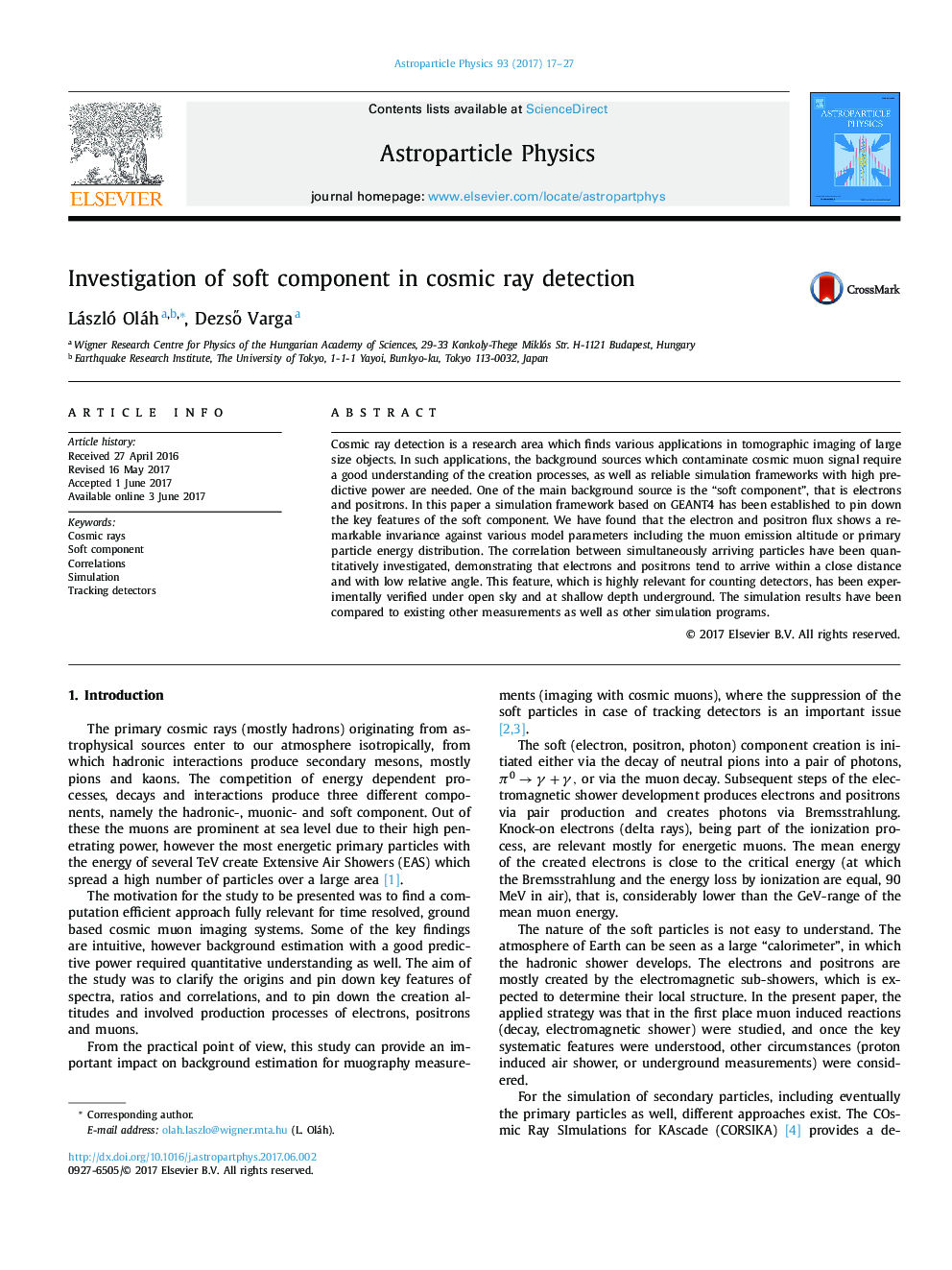| Article ID | Journal | Published Year | Pages | File Type |
|---|---|---|---|---|
| 5486828 | Astroparticle Physics | 2017 | 11 Pages |
Abstract
Cosmic ray detection is a research area which finds various applications in tomographic imaging of large size objects. In such applications, the background sources which contaminate cosmic muon signal require a good understanding of the creation processes, as well as reliable simulation frameworks with high predictive power are needed. One of the main background source is the “soft component”, that is electrons and positrons. In this paper a simulation framework based on GEANT4 has been established to pin down the key features of the soft component. We have found that the electron and positron flux shows a remarkable invariance against various model parameters including the muon emission altitude or primary particle energy distribution. The correlation between simultaneously arriving particles have been quantitatively investigated, demonstrating that electrons and positrons tend to arrive within a close distance and with low relative angle. This feature, which is highly relevant for counting detectors, has been experimentally verified under open sky and at shallow depth underground. The simulation results have been compared to existing other measurements as well as other simulation programs.
Related Topics
Physical Sciences and Engineering
Physics and Astronomy
Astronomy and Astrophysics
Authors
László Oláh, DezsÅ Varga,
